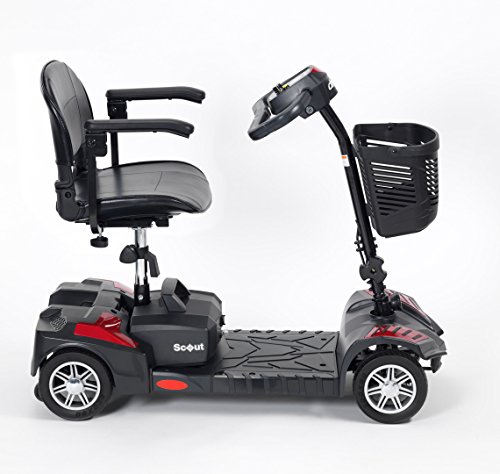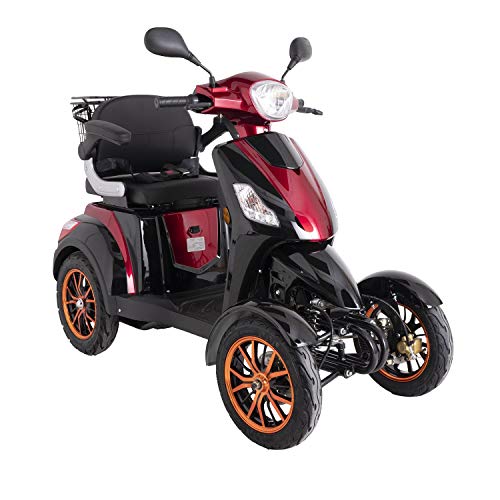The Complete Guide To Urban Mobility Solutions
페이지 정보

본문
 Urban Mobility Solutions
Urban Mobility SolutionsCities face significant challenges in dealing with air pollution, congestion accessibility, and sustainability. Urban mobility solutions that make use of new technologies could improve the quality of life, increase economic vitality, and reduce the environmental footprint.
 To implement these solutions, however requires collaboration across the entire system of mobility. It is crucial to adopt an approach that is centered on the city, and geared towards citizens. Mercedes-Benz experts collaborate with cities and other stakeholders to design an individual solution for each city.
To implement these solutions, however requires collaboration across the entire system of mobility. It is crucial to adopt an approach that is centered on the city, and geared towards citizens. Mercedes-Benz experts collaborate with cities and other stakeholders to design an individual solution for each city.Congestion
Urban lightweight mobility scooter travel electric scooter for seniors planning has for a long time been focusing on the issues of traffic congestion. Traffic time reduces productivity for cities and individuals as a group. City governments must balance the need for innovation in transportation against the effects of an aging infrastructure and a growing population.
Urban transportation systems should be accessible and safe, while reducing noise, pollution and waste. Furthermore, cities must tackle the issues of parking, traffic congestion management and decarbonization.
Various approaches exist to manage congestion however the most effective approach requires everyone to take responsibility of the problem. This begins with recognizing that congestion isn't only an inconvenience for commuters, but also an economic cost for businesses and the overall economy. This is why it is important to use accurate, high-resolution data that captures day-to-day variations in travel times to determine the root causes of congestion and the most effective solutions.
It is important to inform the public as well as business owners about the impact that congestion can have on their business. Consistent and clear messages can increase awareness, inform the public about solutions and inspire business leaders to promote strategies to reduce congestion.
A solution is to increase the capacity of road infrastructure. However, this can be expensive and is usually subject to various restrictions, including the regulations for land use and environmental protection. Other options include promoting alternate methods of transportation like taxi hailing apps and bikeshare programs, as well as the introduction of congestion pricing and carpooling. Parking systems can be inefficient and cause congestion. Smart parking solutions can optimize the utilization of space and divert traffic from crowded roads.
Aging Infrastructure
Across the country towns and cities struggle to cope with traffic congestion and road safety issues caused by aging infrastructure. As the number of vehicles on the road continues to grow bridges and roads put businesses and fold up electric mobility scooter residents at risk, and also extending travel times.
The outdated transportation infrastructure is a challenge that cannot be solved with technology alone. The Oregon Department of Transportation is working to address the problem by investing in new highways and other transportation projects that reduce congestion, increase safety, and modernize the system. These investments will ensure that the Portland region will continue to improve for the generations to come.
As urbanization continues to accelerate, many nations are facing a shortage of affordable homes and the demand for sustainable solutions to mobility is growing. Innovative solutions like e-scooters, bikes, and e-buses are being used to reduce climate change and cut carbon emissions. These new mobility solutions increase accessibility for people who are disabled which is a growing concern of many people.
This study employs an organized literature survey (SLR) to examine 62 scientific papers and forecast the evolution of different scenarios fold up electric mobility scooter, click the following post, until 2030. The gradual development of shared and automated mobility is predicted to be most important in changing the way we move. The scenario "Mine is Yours" is the most popular (35%) followed by "Grumpy Old Transport" (18%) and "Tech-eager Mobility" (17 17 percent). To make these revolutionary 3 wheel electric mobility scooters options more widely accepted by the general public, progressive legislation and supportive policies will be required.
Inequality
Urban mobility solutions need to not just improve traffic flow and reduce emissions, but also be socially sustainable and economically viable for everyone. Transportation costs are often the biggest household expense, and they are often difficult for people with low incomes. The high cost of car payments and fuel costs, as well as maintenance and insurance can create a major financial burden for families, which can hinder people from obtaining services, jobs and education. Furthermore, commutes that are too long could negatively affect the health of the residents.
Public transport is a viable alternative to private cars however, many cities aren't equipped with the infrastructure needed. The aging public transportation system has been constructed to serve much smaller populations, and requires a substantial investment to modernize. A lack of funding and outdated technology can hinder the development of new services.
Additionally, congestion increases the amount of pollutants in the air and is a threat to public health. The resultant poor air quality could aggravate respiratory conditions and reduce overall quality of living. With the help of effective urban mobility planning excessive congestion could be prevented by expanding and enhancing the existing infrastructure.
Expanding the capacity of public transport will decrease travel times and make it more accessible for everyone, including those with disabilities or infirmities. Furthermore, it will reduce the burden on households that have expensive vehicles and free up valuable parking space that can be used to serve more productive needs.
In the future, increasing the use of alternative transportation methods can have an immediate impact on the level of inequality. As cities grow more dense, the gap in commute time between Blacks and Whites and AAPIs and Whites decreases. Women's commute times also decrease relative to men's. This suggests that growing density levels create a need for AAPI workers to pay similar wages to White workers for longer commute times, which causes Black workers to work in far-flung places, and restricts women's access to jobs that match their skills and qualifications.
Air Quality
Air quality concerns are becoming more important because of research that shows that there is a direct connection between health and exposure to toxic pollutants. Heavy traffic congestion and the use of diesel and gasoline vehicles create high levels of particulate matter (PM2.5, PM10) and gases like nitrogen oxides (NO) as well as sulphur dioxide (SO2) and volatile organic compounds (VOC) and carbon monoxide. These are a health risk and contribute to climate change.
Exposure to these pollutants could lead to heart attacks as well as lung irritation, asthma and delay in development in children, and impairment of cognitive functions. They can also contribute to greenhouse gas production and ozone and the urban heat island effect, which causes temperatures to rise in cities.
Promoting active mobility and the development of public transportation can improve the air quality. Reduced emissions from urban transportation can also help achieve local, international and national climate change goals.
Smart mobility solutions can be used to encourage commuters to switch to low-emission vehicles and foldable electric mobility scooter vehicles. In addition they can provide information about safe walking and biking routes. They can also promote ridesharing, which reduces the amount of cars and the pollution on the roads.
In a recent article, we simulated SUMPs' (Sustainable Urban Mobility Plans) impact on 642 cities across Europe. Our results demonstrate that SUMPs have a significant effect on modelled "urban background concentrations" of PM2.5 and NO2, with reductions in these substances amounting to around 7%. However it is important to remember that these results only consider the transport sector's emissions and urban background concentrations. In this study, SUMPs are not evaluated for other benefits like lower energy consumption and reduced street level concentrations. Future studies should take into account these and other benefits.
Logistics
Urban mobility solutions must be built around an ecosystem model that involves multiple actors. They should take into consideration equity, technology and sustainability, all while being tailored to the unique environment of each city. While new technologies may help urban mobility systems, they must also incorporate existing infrastructure, encourage public transport and bike share schemes, and increase safety.
The logistics process involves the movement of goods and people within the city. It is the backbone for urban mobility. It is essential to reduce traffic, maximizing commute times and enhancing travel accessibility. The advancement of new technologies like autonomous vehicles (AVs) will have an immediate impact on city logistics and will improve the efficiency of transportation. efficient. This is because it will remove the need for human drivers, decrease fatal accidents caused by driver errors and increase traffic flow.
Despite these benefits logistical challenges arise due to the fact that it involves a variety of different stakeholders, with each with their own goals, budgets and legacy technology. It is difficult to ensure consistency throughout the execution of a particular project. It is also difficult to scale up and transfer solutions from one city to another since each has their particular needs.
To meet these challenges, cities should encourage technological innovation and develop more efficient, flexible logistical operations that can adapt to the most recent technological advancements. This can be done by encouraging green logistics by integrating environmentally friendly urban planning into SULPs or SUMPs and examining the viability of flying with drones. It is also essential to encourage collaboration between public transportation agencies, private businesses, and logistics service providers. This will help to optimize transport and allow the city to be more fluid which will ultimately improve the citizens' living standards.
- 이전글Ten Apps To Help Manage Your Power Tools Combo Kit 25.02.01
- 다음글10 Things That Your Family Teach You About ADHD Uk Medication 25.02.01
댓글목록
등록된 댓글이 없습니다.



